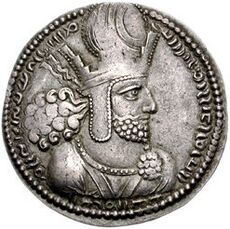272
| القرون: | قرن 2nd · قرن 3rd · قرن 4 |
| العقود: | ع240 ع250 ع260 ع270 ع280 ع290 ع300 |
| السنوات: | 269 270 271 272 273 274 275 |
| ألفية: | الألفية 1 |
|---|---|
| قرون: | القرن 2 – القرن 3 – القرن 4 |
| عقود: | عقد 240 عقد 250 عقد 260 – عقد 270 – عقد 280 عقد 290 عقد 300 |
| سنين: | 269 270 271 – 272 – 273 274 275 |
| 272 حسب الموضوع | |
| السياسة | |
| زعماء الدول – الدول ذات السيادة | |
| تصنيفات المواليد والوفيات | |
| المواليد – الوفيات | |
| تصنيفات التأسيسات والانحلالات | |
| تأسيسات – انحلالات | |
| التقويم الگريگوري | 272 CCLXXII |
| آب أوربه كونديتا | 1025 |
| التقويم الأرمني | N/A |
| التقويم الآشوري | 5022 |
| التقويم البهائي | −1572 – −1571 |
| التقويم البنغالي | −321 |
| التقويم الأمازيغي | 1222 |
| سنة العهد الإنگليزي | N/A |
| التقويم البوذي | 816 |
| التقويم البورمي | −366 |
| التقويم البيزنطي | 5780–5781 |
| التقويم الصيني | 辛卯年 (المعدن الأرنب) 2968 أو 2908 — إلى — 壬辰年 (الماء التنين) 2969 أو 2909 |
| التقويم القبطي | −12 – −11 |
| التقويم الديسكوردي | 1438 |
| التقويم الإثيوپي | 264–265 |
| التقويم العبري | 4032–4033 |
| التقاويم الهندوسية | |
| - ڤيكرام سامڤات | 328–329 |
| - شاكا سامڤات | 194–195 |
| - كالي يوگا | 3373–3374 |
| تقويم الهولوسين | 10272 |
| تقويم الإگبو | −728 – −727 |
| التقويم الإيراني | 350 ق.ر. – 349 ق.ر. |
| التقويم الهجري | 361 ق.هـ. – 360 ق.هـ. |
| التقويم الياباني | N/A |
| تقويم جوچى | N/A |
| التقويم اليوليوسي | 272 CCLXXII |
| التقويم الكوري | 2605 |
| تقويم مينگوو | 1640 قبل جمهورية الصين 民前1640年 |
| التقويم الشمسي التايلندي | 815 |
Year 272 (CCLXXII) was a leap year starting on Monday (link will display the full calendar) of the Julian calendar. At the time, it was known as the Year of the Consulship of Postumius and Veldumnianus (or, less frequently, year 1025 Ab urbe condita). The denomination 272 for this year has been used since the early medieval period, when the Anno Domini calendar era became the prevalent method in Europe for naming years.
أحداث
حسب المكان
الإمبراطورية الرومانية
- Emperor Aurelian launches a two-pronged invasion of the Palmyrene Empire, sending his commander Marcus Aurelius Probus to restore Roman rule in Egypt while he marches into Asia Minor.
- As part of a strategy of clemency, Aurelian spares Tyana after capturing the city. This strategy encourages units under Zenobia to defect to Aurelian.
- Battle of Immae: Aurelian defeats the Palmyrene heavy cavalry (clibanarii) near Antioch. Queen Zenobia flees under cover of darkness to Emesa (Syria).
- Aurelian supports the bishops of Italy in deposing the bishop of Antioch, Paul of Samosata, who had been a supporter of Zenobia. This is the first recorded instance of an imperial intervention in an ecclesiastical dispute.
- Battle of Emesa: Aurelian decisively defeats the Palmyrene army.
- Aurelian besieges Palmyra. Zenobia attempts to escape to Persia but is captured on the Euphrates. Palmyra surrenders soon after.
- Following a series of trials held in Emesa, Cassius Longinus and other advisors of Zenobia are executed for conspiring against Aurelian.
حسب الموضوع
الدين
- Dometius succeeds Titus as Patriarch of Constantinople.
- Saint Denis, first Bishop of Paris, and two of his disciples are beheaded on the road to the Temple of Mercury that stands atop a hill outside of the city. The hill will later be called Montmartre (Mountain of Martyrs) in Lutetia (modern Paris).
- Paul of Samosata is deposed as Patriarch of Antioch.
مواليد
- 27 فبراير - قسطنطين الأكبر، الإمبراطور الروماني (ت. 337)
- Wei Shuo (أو Mouyi), Chinese calligrapher (ت. 349)
وفيات

الملك شاپور الأول من فارس
- شابور الأول (الأكبر)، الإمبراطور الساساني، فيخلفه ابنه هرمز الأول.
- Sabbas Stratelates، جنرال وشهيد روماني.
- سيما فو، Chinese prince and statesman (و. 180)
- وان يو، مستشار وسياسي صيني.
المراجع
الكلمات الدالة:
This article may include material from Wikimedia licensed under CC BY-SA 4.0. Please comply with the license terms.
